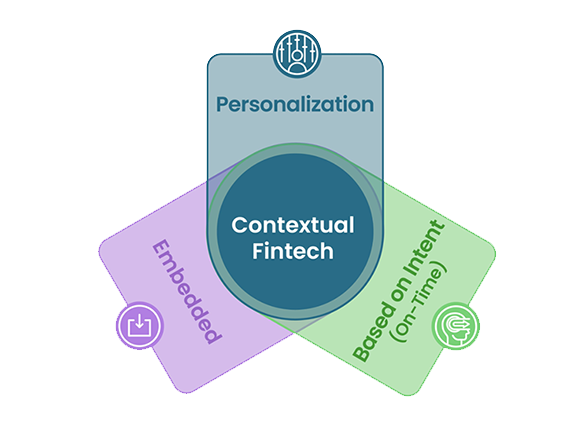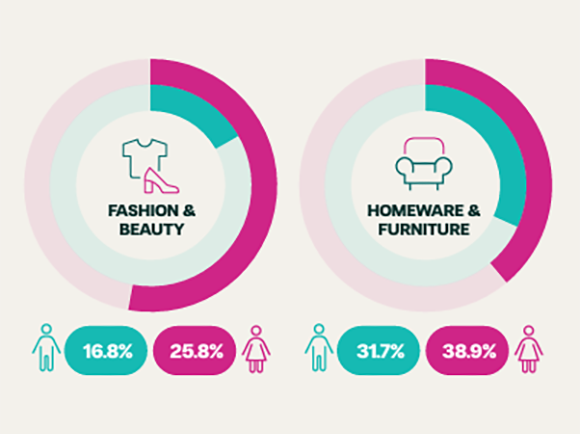What is an embedded lending platform? A comprehensive guide

In today’s ever-evolving digital landscape, businesses are constantly seeking innovative ways to enhance their operations and meet the needs of their customers. One such innovation that has gained significant traction is the concept of embedded lending platforms. Understanding what an embedded lending platform is and how it can benefit businesses is crucial in this era of rapid technological advancement.
Understanding Embedded Lending Platforms
Embedded lending platforms, also known as embedded finance or embedded credit, refer to the integration of lending services directly into the workflows of non-financial businesses. This means that businesses can offer their customers the ability to access financing options seamlessly within their existing user experience.
Imagine a scenario where you’re shopping online for a new laptop. You find the perfect one, but the price is a bit higher than what you can afford upfront. With an embedded lending platform, the online retailer can offer you the option to finance the purchase right then and there, without redirecting you to a separate financial institution. This convenience and simplicity make embedded lending a game-changer in the world of finance.
Definition and Basic Concept of Embedded Lending
Embedded lending is a financial technology solution that allows businesses to offer lending services as part of their core product or service offering. This can include providing loans, installment plans, or lines of credit to customers at the point of purchase or interaction with the business.
Let’s dive deeper into how embedded lending works. When a customer engages with a non-financial business, such as a retail store or an e-commerce platform, they are presented with the option to access credit or financing directly from the business itself. This integration eliminates the need for customers to seek external financing options, saving them time and effort.
For example, imagine you’re shopping for furniture at a local store. The store, through its embedded lending platform, can offer you the option to pay for your purchase in installments over a period of time. This allows you to bring home that new couch or dining table without straining your budget.
By embedding lending capabilities into their operations, businesses can provide a more seamless and convenient experience for their customers. This eliminates the need for customers to seek external financing options, streamlines the purchasing process, and ultimately drives customer satisfaction and loyalty.
Moreover, embedded lending platforms can also enhance the overall shopping experience. For instance, imagine you’re browsing an online marketplace for a new smartphone. The platform, with its embedded lending feature, not only allows you to purchase the device but also offers you the option to trade in your old phone for credit towards the new one. This integrated approach simplifies the entire process, making it easier for you to upgrade your device.
Importance of Embedded Lending in Today’s Economy
In today’s digital economy, consumers prioritize convenience, speed, and simplicity. By incorporating lending services into their offering, businesses can provide customers with the financial flexibility they desire, resulting in increased sales, customer retention, and overall business growth.
Embedded lending platforms have the potential to revolutionize the way we access and utilize financial services. They enable businesses to meet the evolving needs of their customers, who are increasingly looking for seamless and integrated solutions. By offering embedded lending, businesses can differentiate themselves from competitors and attract a wider customer base.
Furthermore, embedded lending platforms empower businesses to extend credit to customers who may not have access to traditional financial services or have limited credit history. This inclusive approach can unlock new opportunities for economic growth and financial empowerment.
For example, imagine a small business owner who wants to expand their operations but lacks the necessary funds. With an embedded lending platform, they can access financing options tailored to their specific needs, without the stringent requirements of traditional banks. This democratization of credit opens doors for entrepreneurs and individuals who may have previously been excluded from the financial system.
In conclusion, embedded lending platforms are reshaping the way businesses offer financial services to their customers. By seamlessly integrating lending capabilities into their operations, businesses can enhance customer experiences, drive growth, and foster financial inclusion. As the digital economy continues to evolve, embedded lending is set to play a pivotal role in shaping the future of finance.
Key Features of Embedded Lending Platforms
Embedded lending platforms come equipped with a range of features that enable businesses to seamlessly integrate lending services into their operations. These features include:
Seamless Integration with Business Operations
An embedded lending platform is designed to seamlessly integrate into a business’s existing infrastructure. This integration ensures a smooth user experience, without disrupting the flow of the customer journey. From application to approval, the entire lending process is seamlessly embedded within the business’s operations.
For example, imagine a retail business that wants to offer financing options to its customers. With an embedded lending platform, the business can integrate the loan application process directly into its point-of-sale system. This means that customers can apply for financing right at the checkout counter, without having to go through a separate application process. The integration is so seamless that customers may not even realize they are using a separate lending platform.
Furthermore, the embedded lending platform can also integrate with the business’s existing customer relationship management (CRM) system. This allows the business to easily track and manage customer loan applications, approvals, and repayments, all within their existing CRM interface. By integrating lending services into their operations, businesses can provide a more convenient and efficient experience for their customers.
Real-time Decision Making and Lending
Embedded lending platforms leverage advanced data analytics and machine learning algorithms to provide real-time credit decisions. This allows businesses to assess the creditworthiness of their customers quickly and accurately, enabling them to provide instant financing options at the point of need.
For instance, let’s consider an e-commerce business that wants to offer financing options to its customers. With an embedded lending platform, the business can analyze various data points, such as the customer’s purchase history, income level, and credit score, in real-time. Based on this analysis, the lending platform can make an instant credit decision and offer financing options to the customer right at the checkout page.
This real-time decision-making capability not only benefits the business by increasing sales and customer satisfaction but also provides a seamless and efficient experience for the customers. They can get immediate access to financing without the need to wait for manual credit checks or lengthy approval processes.
Enhanced User Experience
Embedded lending platforms prioritize user experience, ensuring that the application and approval processes are streamlined and intuitive. By removing unnecessary friction and complexity, businesses can enhance customer satisfaction and drive repeat business.
Consider a small business owner who wants to apply for a business loan. With an embedded lending platform, the application process can be simplified and made more user-friendly. The platform can guide the business owner through a series of easy-to-understand questions, collecting the necessary information for the loan application. The platform can also provide real-time feedback and suggestions to improve the chances of approval.
Additionally, embedded lending platforms can offer personalized loan recommendations based on the business’s financial situation and needs. This level of customization ensures that businesses receive the most suitable financing options, increasing the likelihood of successful loan applications.
By focusing on enhancing the user experience, embedded lending platforms can help businesses build trust and loyalty with their customers. A smooth and hassle-free lending process can leave a positive impression, encouraging customers to come back for future financing needs.
How Embedded Lending Platforms Work
Embedded lending platforms operate by leveraging APIs (Application Programming Interfaces) that facilitate the seamless integration of lending services into non-financial businesses. These APIs enable businesses to connect their existing systems and workflows with lending partners or financial institutions.
The Role of APIs in Embedded Lending
APIs serve as the bridge between the business and the lending partner, allowing for the secure and efficient exchange of data and information. By utilizing APIs, businesses can access the necessary financial infrastructure and offer lending products without the need for extensive financial expertise or infrastructure of their own.
The Lending Process: From Application to Approval
The lending process within an embedded lending platform typically involves a series of steps. First, customers submit an application for financing, providing relevant personal and financial information. This information is then securely transmitted to the lending partner for assessment.
Using advanced algorithms and data analysis, the lending partner evaluates the application in real-time, taking into account factors such as credit history, income, and repayment capacity. Based on this evaluation, a credit decision is made, and the customer is notified of the outcome.
If approved, the customer can then proceed with the purchase or transaction, knowing that financing is available. The funds are disbursed directly to the business, and the customer is provided with the agreed-upon terms and conditions for repayment.
Benefits of Using Embedded Lending Platforms
Embedded lending platforms offer numerous benefits to both businesses and customers. Some of the key advantages include:
Increased Efficiency and Speed
By integrating lending services into their operations, businesses can significantly reduce the time and effort required to secure financing. Customers can access credit in real-time, allowing them to make purchasing decisions quickly and efficiently.
Improved Customer Satisfaction and Retention
Offering embedded lending options enhances the overall customer experience, leading to higher satisfaction levels. By providing seamless access to financing within the business’s ecosystem, customers are more likely to complete the purchase, resulting in increased customer retention and repeat business.
Potential Challenges and Solutions with Embedded Lending Platforms
While embedded lending platforms offer numerous benefits, they also present various challenges that businesses must address. Some of the potential challenges include:
Data Security and Privacy Concerns
When integrating lending services into their operations, businesses must ensure the security and privacy of customer data. This involves implementing robust data protection measures, complying with applicable regulations, and partnering with trustworthy financial institutions that prioritize data security.
Regulatory Compliance and Legal Issues
Operating within the financial landscape requires businesses to navigate various regulatory frameworks and comply with legal requirements. This includes obtaining the necessary licenses, understanding consumer protection laws, and staying up to date with evolving regulations in the lending industry.
In conclusion, embedded lending platforms have emerged as valuable tools for businesses looking to enhance their operations and offer enhanced financial services to their customers. By seamlessly integrating lending capabilities into their workflows, businesses can streamline the customer experience, drive sales, and foster customer loyalty. However, it is essential for businesses to address potential challenges and ensure compliance with relevant regulations to fully leverage the benefits of embedded lending platforms.
You might also
be interested in
Keen to know more?








